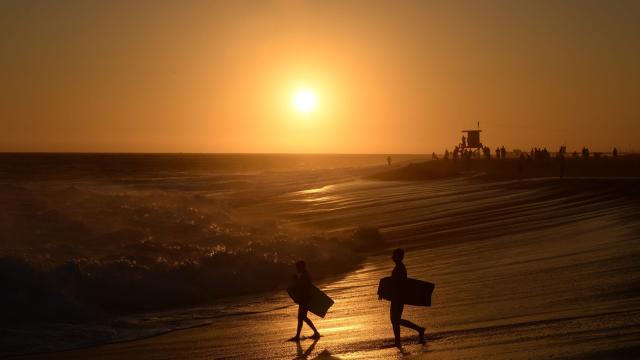The California Current is home to one of the most productive ecosystems on Earth. It would stand to reason we wouldn’t want to mess it up. And yet.
New research published in Nature Geosciences on Monday uses a novel technique to recreate a century of ocean acidification for waters off the California coast. It finds that the region is acidifying twice as fast as the rest of the world and that at times, natural processes are making the impacts even worse. The findings are ominous and show that, given the predicability of said natural processes, there may at least be ways to better manage the shift.
Oceans do humanity a huge favour by sucking vast amounts of carbon dioxide out of the atmosphere (seriously, say thanks next time you visit the sea). In an era when the world has dumped an unprecedented amount of carbon pollution into the atmosphere, the oceans are helping keep the planet from getting even hotter than it already is. But it comes with a catch. That carbon dioxide interacts with seawater and turns it acidic, wreaking havoc on shell-forming organisms and corals.
Yet ocean acidification observations have only really ramped up over the past few decades. To understand changes over the 20th century, scientists have had to turn to other means, using tiny plankton shells found in sediments from the seafloor as a proxy to examine how acidic seas have been in the past. The new findings do that for the California Current Ecosystem by looking at a core taken about 20 miles off the coast of Santa Barbara.
The scientists created an index of shell thickness and size for a type of plankton known as G. bulloides that looks like a distant, less sentient relative of Toad from Super Mario Bros. The sediment core allowed them to examine the state of the ocean from 1900 onward. The results show shells have gotten 20 per cent thinner since then, indicating more acidic waters.
Overall, pH has dropped 0.21, which is a bit more than double the global average over that time. The larger-than-normal decline in pH has to do with the fact that the region sees winds that stir waters from the deep to the surface. Those waters tend to be more acidic, compounding the problem of human-driven ocean acidification.
The research also shows that there are decades-long periods where acidification kicks into overdrive and also slows down. Those are tied with a natural phenomenon known as the Pacific Decadal Oscillation (PDO), a climate pattern that affects wind patterns and in turn can control how much water gets stirred up in the region.
The bad news is that there are periods where ocean acidification has sped up in the California Current. As the climate crisis worsens, that type of supercharged acidification will seriously mess with the ecosystem. The good news is there will be periods where natural processes will slow down acidification, and that could essentially buy time for the ecosystem and the people whose livelihoods rely on it to adapt to the changes.
A similar process is playing out with surface temperatures where the PDO has contributed to climate change in creating heat waves off the West Coast in recent years.
Of course, carbon pollution has to scale way back to prevent total catastrophe, not just for the California Current Ecosystem but for the rest of the planet’s oceans as well. If pollution continues unchecked, the oceans could be unrecognisable by century’s end.
Luckily, it’s pretty easy to figure out who is to blame for the acidification crisis. Recent research shows that just 88 companies are responsible for over half the acidification.
